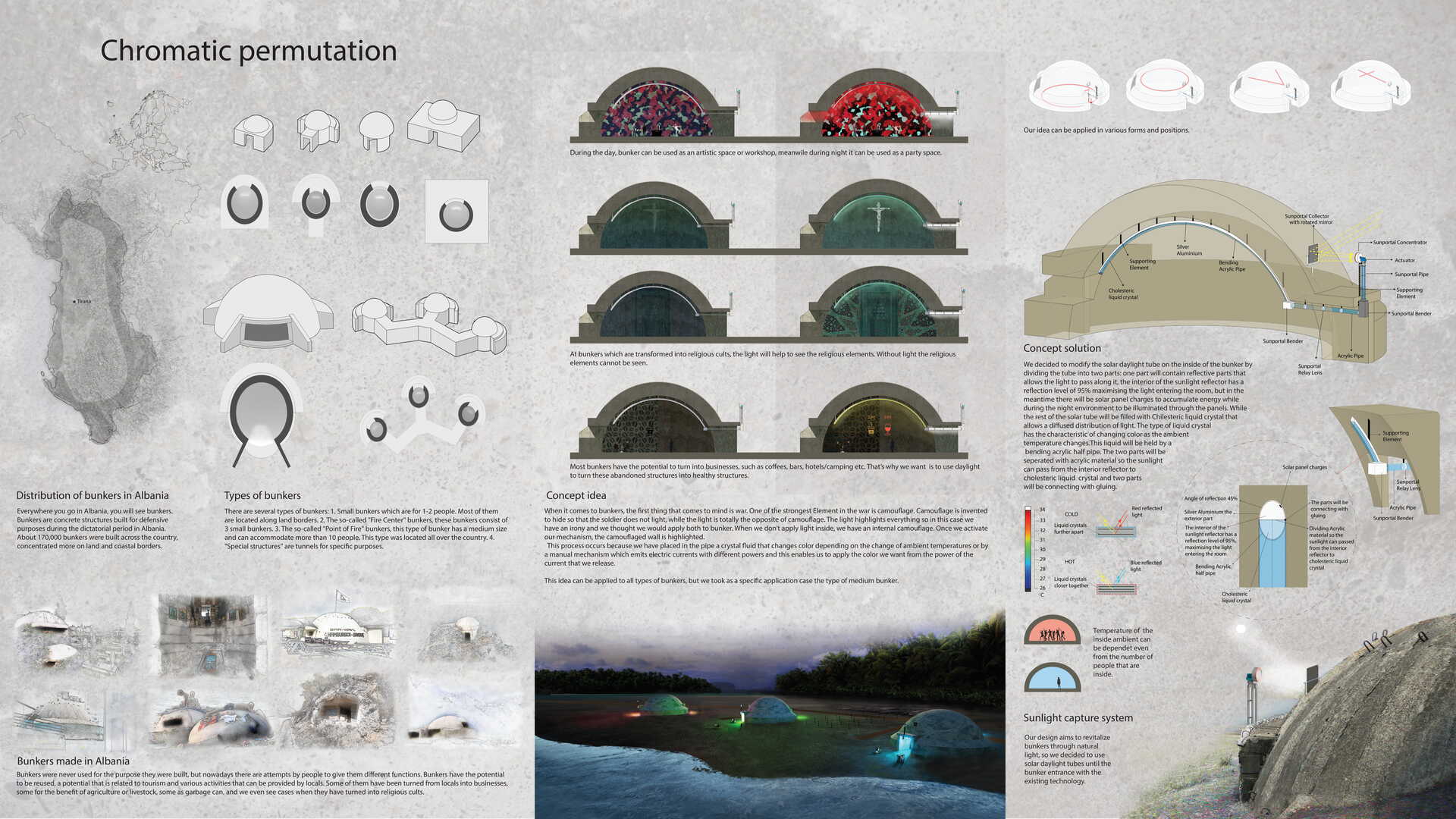Project Description
Albania has been blessed with wonderful mountainous landscapes and marvelous beaches, all these in a very strategic point in the Adriatic sea. This strategic position and long history of invasions led a mostly paranoid, leader of the Albanian communist party, Enver Hoxha to start a bizarre series of defense projects with one of the most bizarre being “Projekti i Bunkerizimit” or “bunkerization” project. This project imagined a bunker for every Albanian inhabitant. He almost achieved this, managing to build around 700,000 bunkers across the whole country, one for every four Albanian inhabitants. “Projekti i bunkerizimit can be compared to other compulsive projects of physical and social engineering found throughout history, different perhaps only in obscurity and ultimately, it’s utter uselessness”. (Payne J, 2014) In his “Projekti i Bunkerizimit” Payne clearly mentions his views on how bunkers can be differently approached in today’s culture of re-purposing structures where he views the bunker interpreted as a self-reflective institution that must rise over the other uses. While we believe that must be the case, we also think that there nothing more self-reflective then the desire of transformation shown throughout the last 30 years by the Albanian people. Our project lies exactly in the power of transformation shown through stages of movement and controlled by light and color. Light as a contrast to the darkness of the bunkers, and chromatic colors as clear contrary to the achromatic nature of these structures. Thus Chromatic Permutation aims to change static uselessness into dynamic adaptation. Everywhere you go in Albania, you will see bunkers. Bunkers are concrete structures built for defensive purposes during the dictatorial period in Albania. More than 170 000 bunkers were built across the country, concentrated more on land and coastal borders, in key strategic points of the country. Bunkers were never used for the purpose they were built, but nowadays there are attempts by people to give them different functions. Bunkers have the potential to be reused, a potential that is related to tourism and various activities that can be provided by locals. Our goal is to turn these abandoned structures into healthy structures for society. The idea is that, through the daylight, we can give life and activate bunkers in terms of attraction and interest not only for locals but even for tourists. When it comes to bunkers, the first thing that comes to mind is war. One of the strongest element in the war is camouflage. Camouflage is invented to hide so that the soldier does not light, while the light is totally the opposite of camouflage. The light highlights everything so in this case we have an irony and we thought we would apply both to bunker. When we don’t apply light inside, we have an internal camouflage. Once we activate our mechanism, the camouflaged wall is highlighted. This process occurs because we have placed in the pipe a crystal fluid that changes color depending on the change of ambient temperatures or by a manual mechanism which emits electric currents with different powers and this enables us to apply the color we want from the power of the current that we release. This idea can be applied to all types of bunkers, but we took as a specific application case the type of medium bunker. Our design aims to revitalize bunkers through natural light, so we decided to use solar daylight tubes until the bunker entrance with the existing technology. We decided to modify the solar daylight tube on the inside of the bunker by dividing the tube into two parts: one part will contain reflective parts that allows the light to pass along it, the interior of the sunlight reflector has a reflection level of 95% maximising the light entering the room, but in the meantime there will be solar panel charges to accumulate energy while during the night environment to be illuminated through the panels. While the rest of the solar tube will be filled with Cholesteric Liquid Crystal that allows a diffused distribution of light. The type of Liquid Crystal has the characteristic of changing color as the ambient temperature changes. This liquid will be held by a bending acrylic half pipe. The two parts will be separated with acrylic material so the sunlight can pass from the interior reflector to cholesteric liquid crystal and two parts will be connecting with gluing.
